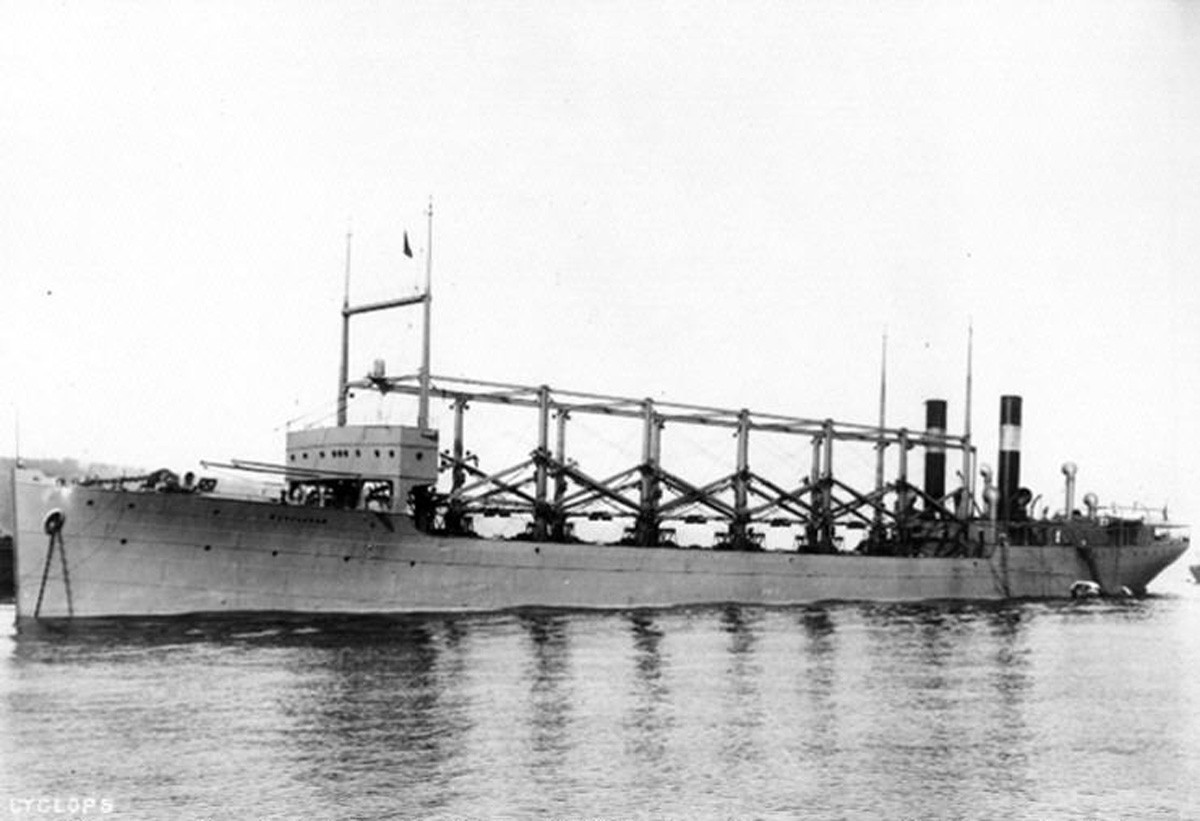Disappearance of USS Cyclops: Still a mystery
- On 02/10/2010
- In Miscellaneous
- 0 comments

By Frederick N. Rasmussen - The Baltimore Sun
The last anyone heard of the Cyclops as it steamed in a voyage that began in Bahia, Brazil, on Feb. 22, 1918, en route to Baltimore with 10,000 tons of manganese ore in its bunkers, was in a telegram to the West Indian Steamship Co. in New York City.
"Advise charterers USS CYCLOPS arrived Barbadoes Three March for bunkers. Expect to arrive Baltimore Thirteen March. Opnav."
The next day, the collier departed Barbados on what should have been a routine voyage to Baltimore, even though its starboard engine was damaged and put out of commission during the passage from Bahia to Rio de Janeiro, forcing it to steam at no more than 10 knots.
Brockholst Livingston, who was the 13-year-old son of U.S. Consul C. Ludlow Livingston, recalled in 1929 that the ship's captain, Lt. Cmdr. George W. Worley, and several other guests, including U.S. Consul-General A. Moreau Gottschalk to Brazil, who was a passenger on the ship, had tea at the consulate.
Before leaving, young Livingston wrote that the guests had signed his sister's autograph book and that their signatures were "probably the latest ones in existence."
"No one, of course, thought there was any danger in the voyage. About five o'clock our guests left and we watched them from the beach as they went on board," he wrote.
"There were some blasts on the whistle and the Cyclops backed. Then, going ahead, she steamed south. We did not consider this course odd until a few weeks later when we got a cable requesting full details of her visit to Barbados," he wrote.
It was the last time that any human had laid eyes on the Cyclops as it steamed away into the gathering evening and a permanent place on the roster of vessels that failed to make port.
Every so often during the intervening decades, the fate of the Cyclops makes the rounds.
Maritime historians pored over old documents in dusty archives and libraries, and old salts gathered in waterfront taverns spinning endless theories of what happened to the vessel that was traversing a lonely stretch of the South Atlantic when it vanished without a trace.
The Cyclops, with 309 on board — officers and crew, including 13 Baltimoreans, and passengers — apparently went to the bottom on March 4, 1918.
Among those who lost their lives were three Navy and two Marine prisoners who were being transported to the brig at Portsmouth, N.H.
There were no survivors or wreckage. A couple of boards found by an island hermit, who claimed they came from the ill-fated vessel's lifeboats, were discounted as not being from the wreck, as were bottles with notes, purportedly from survivors, that turned out to be nothing more than hoaxes.
Add a comment